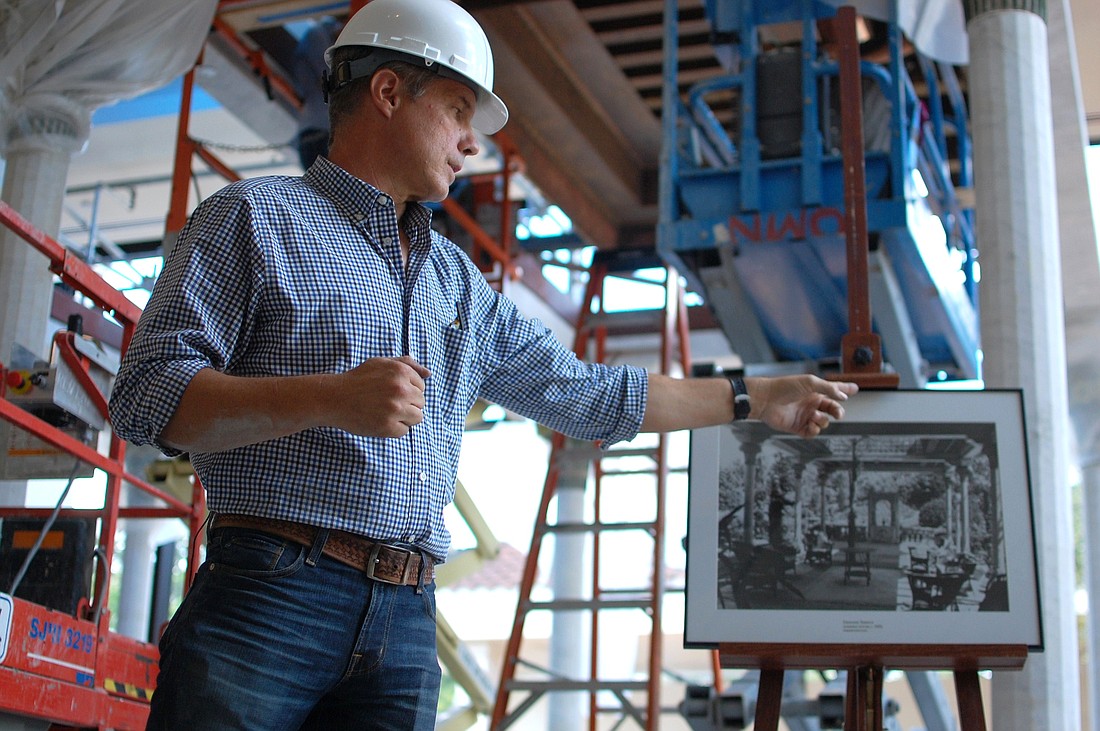- April 25, 2024
-
-
Loading

Loading

The new wing at the Charles Hosmer Morse Museum of American Art is a construction zone, with ladders, heavy equipment and unfinished pieces of artwork scattered across the expansion space.
But in February, it will reveal to the public 11 new galleries depicting Laurelton Hall, the home of late artist Louis Comfort Tiffany.
The main attraction of this 12,222-square-feet expansion is the Daffodil Terrace, an 18-by-32-foot terrace supported by 11-foot-tall marble columns accented with bouquets of glass daffodils.
The expansion will cost $5 million, and about half of the expansion will be dedicated to Laurelton Hall, providing a permanent home to the pieces salvaged from the 1957 fire that destroyed Tiffany’s home.
“It’s more of a memory rather than a duplicate of the hall,” Morse Museum director Laurence Ruggiero said.
The reconstruction of the terrace involved piecing together 600 fragments, and it was done by using old black and white photographs.
John Griswold of Griswold Conservation Associates said it was like “a jigsaw puzzle without the lid.”
“The photos are the lids,” he said.
Griswold said working with the fragments presented problem after problem, from fragile pieces of wood held together only by dried paint, decorations hidden under dried mud and the wasp nests that covered the ceiling pieces.
However, conserving the terrace allowed Griswold to blend his training as an art conservator with his architectural background.
“It’s a cross between building your own tree house and doing what I’ve always wanted to do — working with world-class materials.”
The expansion will also include 250 objects from or associated to Laurelton Hall. Pieces of artwork include leaded-glass windows, lamps, art glass and furnishing. The living room’s focal point will be four leaded-glass panels illustrating the four seasons.
Linda Kulmann, president of the Winter Park Historical Association, said she is looking forward to seeing the furniture pieces that haven’t been on display for two years. She said the terrace will be a point of pride for the city.
Ruggiero said the galleries represent the continuation of Hugh and Jeannette McKean’s legacy to allow public access to their art collection, and it is the last major element of the Tiffany collection.
“The great home and estate that Tiffany built for himself is so personalized, and it’s the work that probably best embodies his personal aesthetic and his personal philosophy of life,” Ruggiero said. “Tiffany, I think his personal philosophy certainly involves the nature and the commitment of finding, creating and experiencing beauty during this brief life we all live in; it’s man-made beauty and natural beauty.”
The Laurelton Hall galleries increase the museum’s size by 50 percent, and it will inhabit the first level of the museum’s expansion. The second level will include an expanded library, a conference room and offices.
Bringing Tiffany artwork to Winter Park
Laurelton Hall was built between 1902 and 1905, and it featured an 84-room mansion on 600-acres of land at Cold Spring Harbor in Long Island.
In 1930, the Tiffany Foundation selected Hugh McKean to stay at Laurelton Hall, where he studied painting under Tiffany.
After a fire destroyed Laurelton Hall in 1957, the McKeans went up to the Tiffany estate and rescued surviving artwork and architectural pieces.
The Morse Museum houses the most comprehensive collection of Tiffany art in the world.